Travelers 2014 Annual Report Download - page 33
Download and view the complete annual report
Please find page 33 of the 2014 Travelers annual report below. You can navigate through the pages in the report by either clicking on the pages listed below, or by using the keyword search tool below to find specific information within the annual report.-
 1
1 -
 2
2 -
 3
3 -
 4
4 -
 5
5 -
 6
6 -
 7
7 -
 8
8 -
 9
9 -
 10
10 -
 11
11 -
 12
12 -
 13
13 -
 14
14 -
 15
15 -
 16
16 -
 17
17 -
 18
18 -
 19
19 -
 20
20 -
 21
21 -
 22
22 -
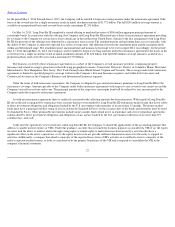 23
23 -
 24
24 -
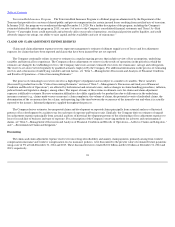 25
25 -
 26
26 -
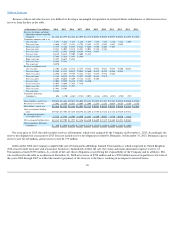 27
27 -
 28
28 -
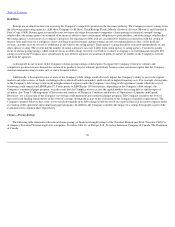 29
29 -
 30
30 -
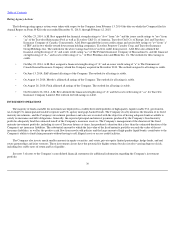 31
31 -
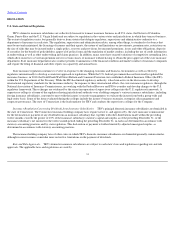 32
32 -
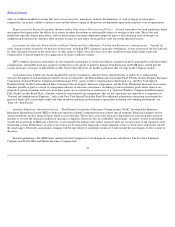 33
33 -
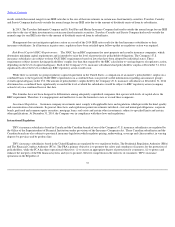 34
34 -
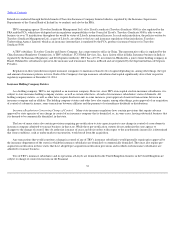 35
35 -
 36
36 -
 37
37 -
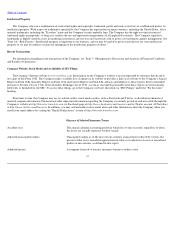 38
38 -
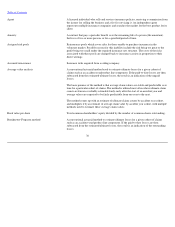 39
39 -
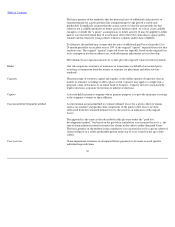 40
40 -
 41
41 -
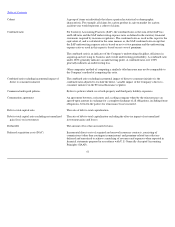 42
42 -
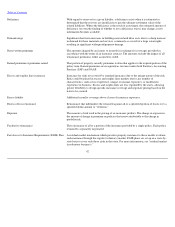 43
43 -
 44
44 -
 45
45 -
 46
46 -
 47
47 -
 48
48 -
 49
49 -
 50
50 -
 51
51 -
 52
52 -
 53
53 -
 54
54 -
 55
55 -
 56
56 -
 57
57 -
 58
58 -
 59
59 -
 60
60 -
 61
61 -
 62
62 -
 63
63 -
 64
64 -
 65
65 -
 66
66 -
 67
67 -
 68
68 -
 69
69 -
 70
70 -
 71
71 -
 72
72 -
 73
73 -
 74
74 -
 75
75 -
 76
76 -
 77
77 -
 78
78 -
 79
79 -
 80
80 -
 81
81 -
 82
82 -
 83
83 -
 84
84 -
 85
85 -
 86
86 -
 87
87 -
 88
88 -
 89
89 -
 90
90 -
 91
91 -
 92
92 -
 93
93 -
 94
94 -
 95
95 -
 96
96 -
 97
97 -
 98
98 -
 99
99 -
 100
100 -
 101
101 -
 102
102 -
 103
103 -
 104
104 -
 105
105 -
 106
106 -
 107
107 -
 108
108 -
 109
109 -
 110
110 -
 111
111 -
 112
112 -
 113
113 -
 114
114 -
 115
115 -
 116
116 -
 117
117 -
 118
118 -
 119
119 -
 120
120 -
 121
121 -
 122
122 -
 123
123 -
 124
124 -
 125
125 -
 126
126 -
 127
127 -
 128
128 -
 129
129 -
 130
130 -
 131
131 -
 132
132 -
 133
133 -
 134
134 -
 135
135 -
 136
136 -
 137
137 -
 138
138 -
 139
139 -
 140
140 -
 141
141 -
 142
142 -
 143
143 -
 144
144 -
 145
145 -
 146
146 -
 147
147 -
 148
148 -
 149
149 -
 150
150 -
 151
151 -
 152
152 -
 153
153 -
 154
154 -
 155
155 -
 156
156 -
 157
157 -
 158
158 -
 159
159 -
 160
160 -
 161
161 -
 162
162 -
 163
163 -
 164
164 -
 165
165 -
 166
166 -
 167
167 -
 168
168 -
 169
169 -
 170
170 -
 171
171 -
 172
172 -
 173
173 -
 174
174 -
 175
175 -
 176
176 -
 177
177 -
 178
178 -
 179
179 -
 180
180 -
 181
181 -
 182
182 -
 183
183 -
 184
184 -
 185
185 -
 186
186 -
 187
187 -
 188
188 -
 189
189 -
 190
190 -
 191
191 -
 192
192 -
 193
193 -
 194
194 -
 195
195 -
 196
196 -
 197
197 -
 198
198 -
 199
199 -
 200
200 -
 201
201 -
 202
202 -
 203
203 -
 204
204 -
 205
205 -
 206
206 -
 207
207 -
 208
208 -
 209
209 -
 210
210 -
 211
211 -
 212
212 -
 213
213 -
 214
214 -
 215
215 -
 216
216 -
 217
217 -
 218
218 -
 219
219 -
 220
220 -
 221
221 -
 222
222 -
 223
223 -
 224
224 -
 225
225 -
 226
226 -
 227
227 -
 228
228 -
 229
229 -
 230
230 -
 231
231 -
 232
232 -
 233
233 -
 234
234 -
 235
235 -
 236
236 -
 237
237 -
 238
238 -
 239
239 -
 240
240 -
 241
241 -
 242
242 -
 243
243 -
 244
244 -
 245
245 -
 246
246 -
 247
247 -
 248
248 -
 249
249 -
 250
250 -
 251
251 -
 252
252 -
 253
253 -
 254
254 -
 255
255 -
 256
256 -
 257
257 -
 258
258 -
 259
259 -
 260
260 -
 261
261 -
 262
262 -
 263
263 -
 264
264 -
 265
265 -
 266
266 -
 267
267 -
 268
268 -
 269
269 -
 270
270 -
 271
271 -
 272
272 -
 273
273 -
 274
274 -
 275
275 -
 276
276 -
 277
277 -
 278
278 -
 279
279 -
 280
280 -
 281
281 -
 282
282 -
 283
283 -
 284
284 -
 285
285 -
 286
286 -
 287
287 -
 288
288 -
 289
289 -
 290
290 -
 291
291 -
 292
292 -
 293
293 -
 294
294 -
 295
295 -
 296
296 -
 297
297 -
 298
298 -
 299
299 -
 300
300 -
 301
301 -
 302
302 -
 303
303 -
 304
304 -
 305
305 -
 306
306 -
 307
307 -
 308
308 -
 309
309 -
 310
310 -
 311
311 -
 312
312 -
 313
313 -
 314
314 -
 315
315 -
 316
316 -
 317
317 -
 318
318 -
 319
319 -
 320
320 -
 321
321 -
 322
322 -
 323
323 -
 324
324 -
 325
325 -
 326
326 -
 327
327 -
 328
328 -
 329
329 -
 330
330 -
 331
331 -
 332
332 -
 333
333 -
 334
334 -
 335
335 -
 336
336 -
 337
337 -
 338
338 -
 339
339 -
 340
340 -
 341
341 -
 342
342 -
 343
343 -
 344
344 -
 345
345 -
 346
346 -
 347
347 -
 348
348 -
 349
349 -
 350
350 -
 351
351 -
 352
352 -
 353
353 -
 354
354 -
 355
355 -
 356
356 -
 357
357 -
 358
358 -
 359
359 -
 360
360 -
 361
361 -
 362
362 -
 363
363 -
 364
364 -
 365
365 -
 366
366
 |
 |

Table of Contents
states to establish standards to ensure that rates are not excessive, inadequate, unfairly discriminatory or used to engage in unfair price
competition. An insurer's ability to increase rates and the relative timing of the process are dependent upon each respective state's requirements.
Requirements for Exiting Geographic Markets and/or Canceling or Nonrenewing Policies. Several states have laws and regulations which
may impact the timing and/or the ability of an insurer to either discontinue or substantially reduce its writings in that state. These laws and
regulations typically require prior notice, and in some instances insurance department approval, prior to discontinuing a line of business or
withdrawing from that state, and they allow insurers to cancel or non
-
renew certain policies only for certain specified reasons.
Assessments for Guaranty Funds and Second
-
Injury Funds and Other Mandatory Pooling and Reinsurance Arrangements.
Virtually all
states require insurers licensed to do business in their state, including TRV's domestic insurance subsidiaries, to bear a portion of the loss suffered
by some claimants because of the insolvency of other insurers. Many states also have laws that establish second
-
injury funds to provide
compensation to injured employees for aggravation of a prior condition or injury.
TRV's domestic insurance subsidiaries are also required to participate in various involuntary assigned risk pools, principally involving workers'
compensation, automobile insurance, property windpools in states prone to property damage from hurricanes and FAIR plans, which provide
various insurance coverages to individuals or other entities that otherwise are unable to purchase that coverage in the voluntary market.
Assessments may include any charge mandated by statute or regulatory authority that is related directly or indirectly to underwriting
activities. Examples of such mechanisms include, but are not limited to, the Florida Hurricane Catastrophe Fund, Florida Citizens Property Insurance
Corporation, National Workers' Compensation Reinsurance Pool, various workers' compensation related funds (e.g., the New York Special
Disability Fund), North Carolina Beach Plan, Louisiana Citizens Property Insurance Corporation, and the Texas Windstorm Insurance Association.
Amounts payable or paid as a result of arrangements that are in substance reinsurance, including certain involuntary pools where insurers are
required to assume premiums and losses from those pools, are accounted for as reinsurance (e.g., National Workers' Compensation Reinsurance
Pool, North Carolina Beach Plan). Amounts related to assessments from arrangements that are not reinsurance are reported as a component of
"General and Administrative Expenses," such as the New York Special Disability Fund. For additional information concerning assessments for
guaranty funds and second
-
injury funds and other mandatory pooling and reinsurance agreements including state
-
funding mechanisms, see
"Item 1A—Risk Factors."
Insurance Regulatory Information System. The National Association of Insurance Commissioners (NAIC) developed the Insurance
Regulatory Information System (IRIS) to help state regulators identify companies that may require special attention. Financial examiners review
annual statements and key financial ratios based on year
-
end data. These ratios assist state insurance departments in executing their statutory
mandate to oversee the financial condition of insurance companies. Each ratio has an established "usual range" of results. A ratio result falling
outside the usual range of IRIS ratios, however, is not considered a failing result; rather, unusual values are viewed as part of the regulatory early
monitoring system. Furthermore, in some years, it may not be unusual for financially sound companies to have several ratios with results outside
the usual ranges. Generally, an insurance company will become subject to regulatory scrutiny if it falls outside the usual ranges of four or more of
the ratios.
Based on preliminary 2014 IRIS ratios calculated by the Company for its lead domestic insurance subsidiaries, The Travelers Indemnity
Company and St. Paul Fire and Marine Insurance Company had
32
